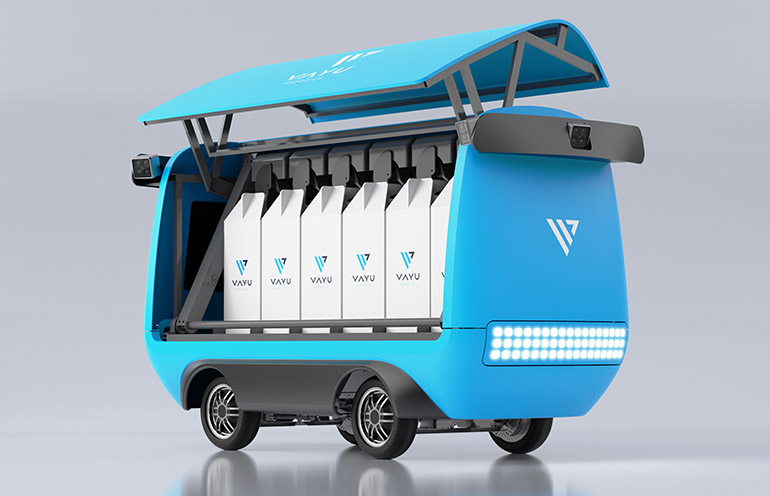There is a perception in popular culture that we all desire to interact with robots. This may stem from characters like R2-D2 in Star Wars, an endearing robot. Who wouldn’t want to hang out with an android friend?
In reality, not so much. If a robot comes to deliver your restaurant order, that’s cool, but you still need to acknowledge it to complete the transaction. Anand Gopalan, CEO of Vayu Robotics, understands this.
“We’ve done studies that show that customers don’t actually like to be interrupted in the middle of their day and come out and interact with a robot,” he said in an interview with Food On Demand. “They would rather just get a message that their package has been dropped off at their doorstep.”
Gopalan has a plan for this. His company has announced the launch of an AI-powered delivery robot that can not only arrive at a destination but also drop off the order.
On To The Next One
While Vayu’s robot aims to ease consumers’ robot anxiety, Gopalan highlights another advantage that will appeal to efficiency enthusiasts. “Our robot can do multiple deliveries in an hour. It can drop a package off and go on to the next one,” he said. “We are the first delivery robot company to show this as a viable solution.”
Innovation often requires boldness. Gopalan envisioned building a robot that thinks and behaves like a human. Not long ago, this would have seemed absurd, even frightening. But with AI, it is now feasible.
“This is a first application for what people are calling the robotics foundation model, or AL as applied to robots,” he said. “Our robot has an abstract understanding of certain tasks. Natural language was the first domino to fall with ChatGPT. We have applied this to the task of moving goods and mobility. We have developed a robot that can operate across any sort of operational domain, whether it’s inside a grocery store, a city, or more complex environments like restaurants or driveways. We have figured out how the same brain can work across all of those environments. The robot can communicate using natural language and can accept natural-language instructions. It can tell you what it’s seeing as it’s moving through the world.”
If this all sounds like a song from Kraftwerk, you’re not wrong. But it’s more than that. It’s the future. And the present.
Gopalan is confident in an area that has long challenged robot manufacturers in the food-delivery space: apartment buildings. “I can imagine a scenario in which one robot runs up and down delivering to various apartments, and you have separate robots on a wheel system functioning on the streets.”
The price point is £5,000 per robot, which is low compared to autonomous vehicles. And while no one will compare the robot to Noah Lyles, it can move up to 20 mph, all while carrying a payload of up to 100 pounds. The robot is convincing industry observers of its potential.
“Our research from the third-party logistics sector revealed this year that lower-cost methods of enabling demand-driven enterprises are important, especially given the current freight recession. Vayu Robotics offers lower-cost solutions, both in hardware and in development costs, which empowers smaller players to provide solutions similar to those of larger providers, with comparable capabilities, to rationalise inventory without using higher-cost light detection and ranging,” said Keith Biondo, publisher of Inbound Logistics magazine. “Our research also shows that direct-to-customer fulfilment operations will continue to grow quickly, in both the industrial and consumer sectors.”
Robots Are Coming
Does Gopalan actually envision a future with delivery robots everywhere?
He certainly does.
“When you look at the problem of moving goods, especially in the developed world, like Europe and South America and in Asian markets, the economics of delivery are challenging and inefficient. It’s an area that is ripe for an automation solution,” he said. “I think the world will have a variety of different types of robots.”
The potential market for delivery robots is indeed substantial. In the U.S. alone, 23 percent of retail purchases are expected to take place online by 2027, according to Statista.
Vayu, which raised £10 million in seed funding last year in a round led by Khosla Ventures, already has an order from an e-commerce company for 2,500 robots. Gopalan says the company can grow at the speed of demand.
“In my past life as CEO of Velodyne LiDAR, I was intimately familiar with high-volume production of complex systems,” he said. “We have lined up manufacturing partners who can help us scale. This is not some £40,000 gizmo. We have designed it to be affordable.”
